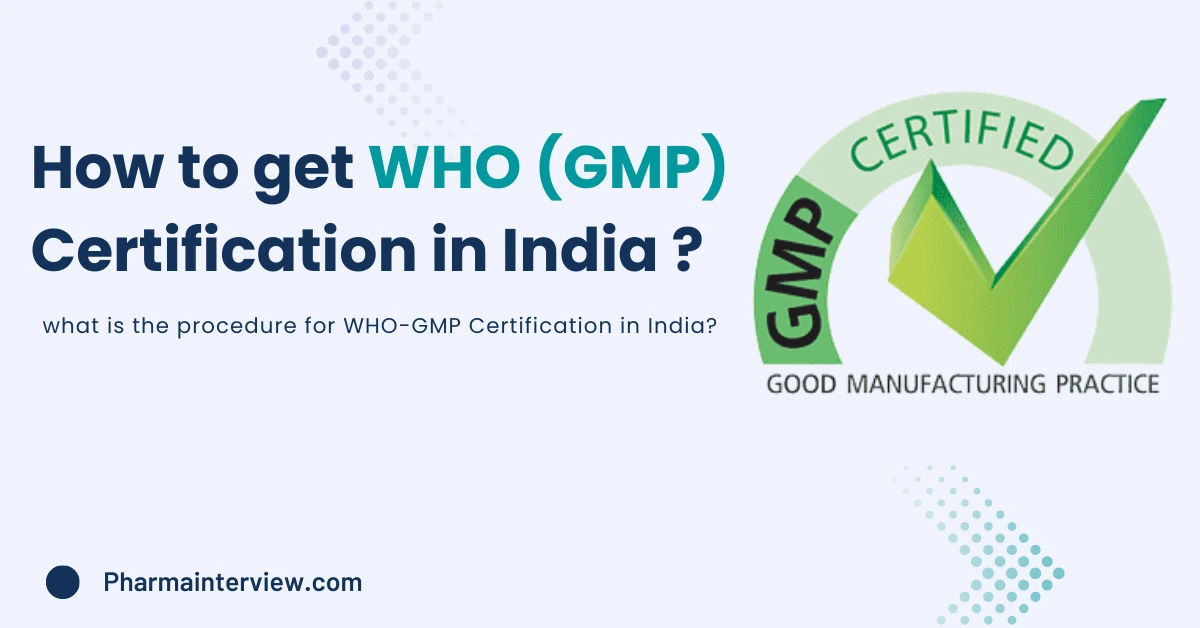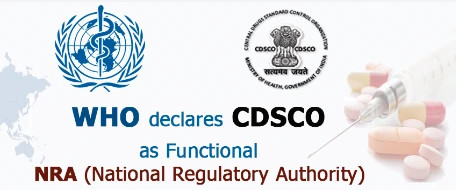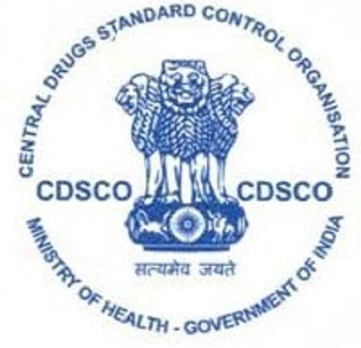
The WHO GMP (World Health Organization Good Manufacturing Practices) inspection requirement and certification are important for pharmaceutical manufacturers and related facilities to ensure the quality, safety, and efficacy of their products.
In India, the Central Drugs Standard Control Organization (CDSCO) is the regulatory authority responsible for ensuring the quality of pharmaceutical products. CDSCO conducts inspections of manufacturing facilities to assess compliance with WHO GMP guidelines.
the GMP certification indicates that the manufacturer has established and maintains appropriate quality management systems and manufacturing processes.
Introduction WHO, CDSCO & FDCA
- The Central Drugs Standard Control Organization is India’s national regulatory body for cosmetics, pharmaceuticals and medical devices.
- Basic principles of WHO GMP is similar to any established GMP requirement.
- The country which not have a developed regulatory agency yet wanted to import drugs.
- 191 countries have solution/scheme for international trade based on WHO GMP Certificate.
WHO

To assess compliance of GMP, WHO declares CDSCO as function NRA authority.
CDSCO Central Authority

- Approval of New Drug in India
- Import License
- DUAL NOC (Import of dual use excipients)
- EU Written confirmation
- Amendment of D&C act & Rule
- Banning of Drug & Cosmetics
- Testing of New drug
- GMP Inspection
FDCA State Authority

- Manufacturing License
- Product Permission
- WHO GMP Certificate
- FDCA Plan/Layout
- Approval of Technical Person
- COPPs (Certificate of Pharmaceutical Products)
- No-conviction certificate
- and many more
Importance of WHO GMP Certification
- International trade
- EU Written confirmation
- Certificate of Pharmaceutical Products
- Export Product permission
CDSCO Organization
Drugs Controller General of India (DCGI) is the head of department of the Central Drugs Standard Control Organization of the Government of India responsible for approval of licences of specified categories of drugs such as blood and blood products, IV fluids, vaccines, and sera in India. Drugs Controller General of India, comes under the Ministry of Health & Family Welfare. DCGI also sets standards for manufacturing, sales, import, and distribution of drugs in India.
CDSCO Organization chart:
- Government of India
- Ministry of Health and Family Welfare
- Directorate General Of Health Services
- Drugs Controller General of India (DCGI)
- CDSCO, Head Quarters – New Delhi
- Deputy Drugs Controller of India (DDCI) , CDSCO Zonal Office
The central government have established 6 zonal offices of CDSCO (Central Drugs Standard Control Organization) at Mumbai, Kolkata, Chennai, and Ghaziabad, Hyderabad, Ahmedabad, various Sub-Zonal offices and Port offices, which works in close collaboration with the state control administration and assist them in securing uniform enforcement of the Drug Act.
Authority involved for Granting WHO GMP Certificate
- DDCI, CDSCO Ahmedabad Zonal Office, India
- Commissioner, FDCA, State
- Asst. Commissioner, FDCA, Local office
Procedure for WHO GMP Certification in India
- Application with required of Documents: 4 Sets of Documents as per Self Appraisal Check List, 1- CDSCO, Zonal Office, 2-FDCA, State, 3-FDCA, Local office, 4-For Manufacturer
- Review of Application: Review of application and Documents as per WHO Checklist. To obtain WHO GMP certification in India, pharmaceutical manufacturers need to submit an application to the CDSCO along with the required documents, including a detailed description of the manufacturing processes, quality control procedures, and facilities.
- Joint inspection: After receiving the application, CDSCO conducts an inspection of the manufacturing facility to assess compliance with the WHO GMP guidelines. The inspection covers various aspects such as premises, equipment, documentation, quality control systems, and personnel training. the Joint Inspection by DI (CDSCO+FDCA) may take 2 days or more days
- Audit report & Compliance: Preparation and sharing the Compliance report with CAPA closure
- Corrective Actions: If any non-compliance or deficiencies are identified during the inspection, the manufacturer is required to take corrective actions to rectify the issues. The CDSCO may conduct follow-up inspections to verify the implementation of corrective measures.
- Issuance of Certification: If the manufacturing facility is found to be in compliance with the WHO GMP guidelines, the CDSCO issues the WHO GMP certification. This certification demonstrates that the manufacturer follows internationally recognized quality standards in their operations.
- Validity of GMP Certificate: Granting WHO GMP Certificate and COPPs (Certificate of Pharmaceutical Products) by Commissioner FDCA, State based on Joint inspection report, Valid for 3 Yrs. from the date of Issuance.
WHO GMP Inspection scope
- Product
- Product design
- Stability Studies
- Process validation
- Procedures: Production of the final product as per specification
- Facilities: This encompasses the building, machinery, services and utilities, manpower etc.
WHO GMP requirements
- Self-Appraisal GMP Inspection Checklist
- Copy of Drug Manufacturing License No. G/XX/XXXX
- Copy of WHO GMP Certificate and list of approved products for COPP
- List of approved products under manufacturing license No. G/XX/XXXX
- List of Machinery
- List of approved technical staff of Manufacturing, Packing & testing.
- List of laboratory equipment’s for testing in Quality Control
- Master plan of Factory & Copy of approved site plans
- Site Master File as per WHO requirements.
- No. of batches of applied product manufactured (Last 2 Yrs.)
- List of Approved/qualified vendor for KSM (Key Starting Material)/API for applied products
- Name of Key Persons
- Details of Area
- List of Contract manufacturer/Laboratories
- List of laboratory equipment’s for testing in Quality Control
- Manufacturing flow chart with Critical control parameters
- Copy of Manograph of applied pharmacopeia for applied Products
- Previous CDSCOA inspection observation & CAPA
- Details of PTC, Batches manufactured / Reprocessed/Recall, Process validation
- Process Validation Reports
- Details of Stability Data
- Details of Water System
- Details of HVAC System
- List of SOPs
- Copy of the COPPs granted by FDCA, State
- Details of Export products with Country
- Copy of Power of Attorney of the person
Conclusion
It is important to note that WHO GMP certification is not a one-time process. The manufacturing facilities are subject to periodic inspections to ensure ongoing compliance with the guidelines.
It is advisable for pharmaceutical manufacturers in India to consult with the CDSCO or seek professional assistance to understand the specific requirements and procedures for WHO GMP certification as they may be subject to updates and changes over time.
People also read :
- 21 CFR Part 211 – cGMP guidelines for Finished pharmaceuticals
- 21 CFR guidelines for pharmaceuticals
- Top 10 most effective root cause analysis investigation tools
- What is root cause analysis ?
- Change Control Management in pharmaceutical industry
- Handling of deviation in pharma industry
- Dissolution test for solid dosage forms
- ALCOA Plus 9 Principles for Data Integrity
Good information.